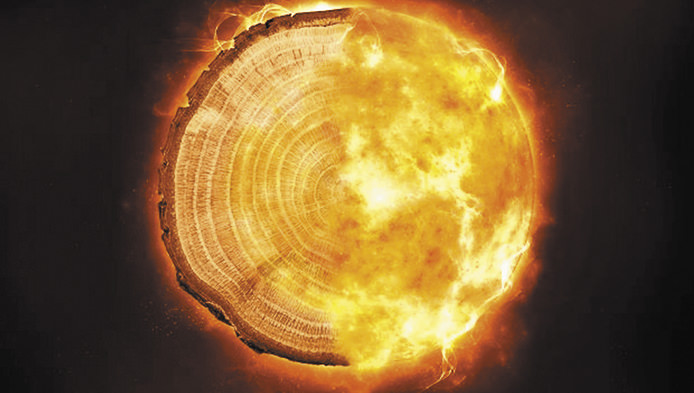
Image courtesy of University of Queensland
Sam Miller
Oct. 12 is the beginning of the SaddleBrooke Skygazers Astronomy Club calendar year, and we are in for a different perspective of astronomy this month. Our speaker will be Dr. Irina Panyushkina, a Research Associate Professor of Dendrochronology and member of the Graduate Faculty, Tree Ring Laboratory at the University of Arizona. Dr. Panyushkina will speak on the production of cosmogenic isotopes resulting from cosmic rays. The Sunday evening, Oct. 12, meeting will be at the DesertView Theater, 39900 S. Clubhouse Drive, at 7 p.m. In her presentation, Dr. Panyushkina will discuss her collaborative research on variations of carbon-14 production rate and the identification of Miyake events and rapid carbon-14 excursions.
A Miyake event is an observed sharp enhancement of the production of cosmogenic isotopes by cosmic rays. It can be marked by a spike in the concentration of radioactive carbon isotope 14. There is strong evidence that Miyake events are caused by extreme solar particle events, and they are likely related to super-flares discovered on solar-like stars. The largest known Miyake event was reported between 12,350 and 12,349 BCE. It was identified by a study conducted by an international team of researchers who measured radiocarbon levels in ancient trees.
Irina P. Panyushkina became a faculty member of the Laboratory of Tree-Ring Research, the University of Arizona in 2006. Her doctoral and post-doctoral work was at the Sukachev Institute of Forest, Russian Academy of Science. She is a Fulbright recipient from the U.S. State Department and has developed and directed over a dozen research projects funded by the National Science Foundation, the National Geographic Society, and the CRDF Global. As an active member of the post-Soviet scientific community, Dr. Panyushkina facilitates collaborative research in Paleogeography and Dendrochronology between investigators of the United States and Europe throughout Russia and Kazakhstan. The majority of her projects investigate environmental change and climate variability with tree-ring proxies. Her current research focuses on understanding past climate-human society interactions.
The SaddleBrooke Skygazers Astronomy Club meets monthly (and typically) on the second Sunday evening at 7 p.m. at the DesertView Theater. The next Star Parties are on Tuesday, Oct. 21, and Wednesday, Nov. 12, at the softball field parking lot from 6:30 to 8 p.m. The public is welcome to attend both. Club and Star Party information can be obtained by emailing Sam Miller at twoyosemite@gmail.com.
